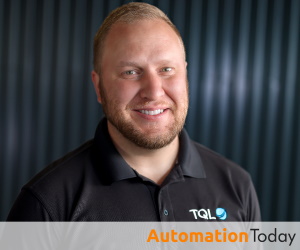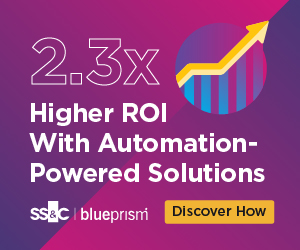
Total Quality Logistics (TQL) helps businesses move anything and everything from where it’s made to where it’s sold. The Cincinnati-based freight brokerage firm, founded in 1997, has grown to be one of the largest privately owned companies in the U.S. with more than 9,000 employees in 56 locations. While it doesn’t own ships, trucks or rail cars, it does operate a network that coordinates them and advises clients on how to optimize their logistical needs. In 2022 alone, the company oversaw the movement of over three million loads of freight.
Of course, a company launched 26 years ago in such a complicated industry has developed hundreds of manual processes over the years that, if automated, could supercharge productivity and help manage costs of operating in such a complicated and high-volume business.
Ryne Heck, TQL’s Transformation Leader, certainly thought so. He began researching and recommending enterprise automation software to his company’s leadership as far back as 2018, understanding its potential quickly. Realizing that potential, however, was not as easy as choosing a provider, integrating the software and reaping the benefits. For many end users, there are growing pains they need to get past first.

Finding a Use Case
After Heck’s initial recommendation, TQL listened and chose UiPath as their provider. According to Heck, once the technology was onboarded, it took some time for TQL to figure out where it really fit. While there were possibilities, there were also concerns about the complexity of their processes and a lack of qualified developers in house.
So, despite investing in the technology, automation was not a priority—until the world stopped.
When Covid forced most consumption online, it completely changed the way supply chains worked and put a serious strain on companies in the logistics business. TQL’s volume spiked and suddenly the software that had been in house for more than a year, but hadn’t been really used, became vital.
Shipments are in constant motion 24 hours a day and TQL’s business relies on accurately tracking those shipments. One of the first use cases that emerged centered around better preparing its employees to hit the ground running each day. While shipments are always in motion, humans are not. So, one of the first things that would happen in the morning is staff would log in and manually visit online portals of third parties to pull together fragmented data to update tracking.
The first automation TQL implemented was to log the employees who were in charge of this into their machines and assemble the data so it was ready when they came in at 8 a.m. Heck says the time savings from this first foray into using the technology in the spring of 2021 was eye opening to leadership and quickly resulted in expansion of the program.
“By 2022 we had an established program. So it took a little less than a year once we had automations in production and proved the value,” Heck explains. “Now, leadership sees the value of what we’re doing for our workforce, and that we need to invest a little more and take this to the next level. They had to feel it and experience it for it to really sink in. After that we started expanding out to different departments.”
Show Value, Build Trust
As TQL’s experience shows, getting from theory to practical understanding to scale for an end user is not often a smooth linear process. There can be times when things seem stalled and opportunities to move quickly aren’t obvious.
But demonstration of value is always the catalyst. Once Heck found one use case and presented results, the company moved quickly. They expanded the development team, migrated to UiPath’s cloud-based product, established a Center of Excellence, worked with automation partners and continued to add value to the business.
“If someone presents a problem and you bring a solution to the table, you have to deliver it,” he says. “We were delivering on time, we were meeting the needs, and building the trust, which is the biggest thing. To be successful, your stakeholders need to trust the automation. If they don’t trust this, they’re not going to use it, but we established trust early on and that really helped our success.”
If you liked this article, please sign up to Automation Today! Registrants will receive our free weekly newsletter updating you on the most recent developments in the Enterprise Automation, Intelligent Automation, Process Mining and AI space. In addition to news updates, we will also provide feature articles (like this one) with a more in-depth examination of issues for end users and their enterprises.


